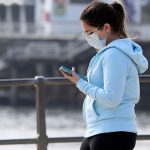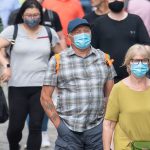The number of children off school due to COVID-19 in England is at its highest rate since schools reopened in March, latest government figures show.
Data released by the Department of Education shows around 5.1% of all pupils in state-funded schools did not attend school for COVID-19 related reasons on 24 June – a total of 375,000 children.
This is up from 3.3% on 17 June and 1.2% on 10 June.
In primary schools, 4.5% of children did not attend due to virus-related reasons on 24 June, up from 2.7% on 17 June and 1.1% on 10 June.
In total, 24,000 children were off with suspected cases of coronavirus and 15,000 stayed at home after testing positive.
Please use Chrome browser for a more accessible video player
The majority of absentees, 279,000 students, were self-isolating due to potential contact with a COVID-19 case from inside their educational setting.
In comparison, 57,000 were isolating after potentially coming into contact with a person who tested positive for the virus from outside their school, which is around 0.8% of all pupils in state-funded schools in England.
0.1% of children were absent as a result of school closures due to COVID-related reasons.
The data comes as ministers are set to decide on whether to scrap self-isolation for pupils in England if one of their classmates tests positive.
Under current rules, whole classes or even entire year groups, known as “bubbles”, have to self-isolate for 10 days if someone tests positive.
Follow the Daily podcast on Apple Podcasts, Google Podcasts, Spotify, Spreaker
The government has recently trialled daily contact testing for children as an alternative to the current system.
Earlier, schools minister Nick Gibb revealed an announcement on new COVID measures for schools will be made prior to the fourth and final stage of the government’s lifting of lockdown restrictions, which is scheduled for 19 July.
Headteachers have already been asked to prepare for new testing requirements for the start of the new school year.
“We are conducting trials of daily contact testing as a possible alternative to self-isolation,” Mr Gibb said.
“What matters also is that we keep the schools safe and if you go round our schools you will see a raft of measures to reduce the infection rates within schools.
“There’s extra hygiene, there’s staggered breaks, we keep children in bubbles and there’s extra ventilation in classrooms to minimise the risk of transmission.”






















